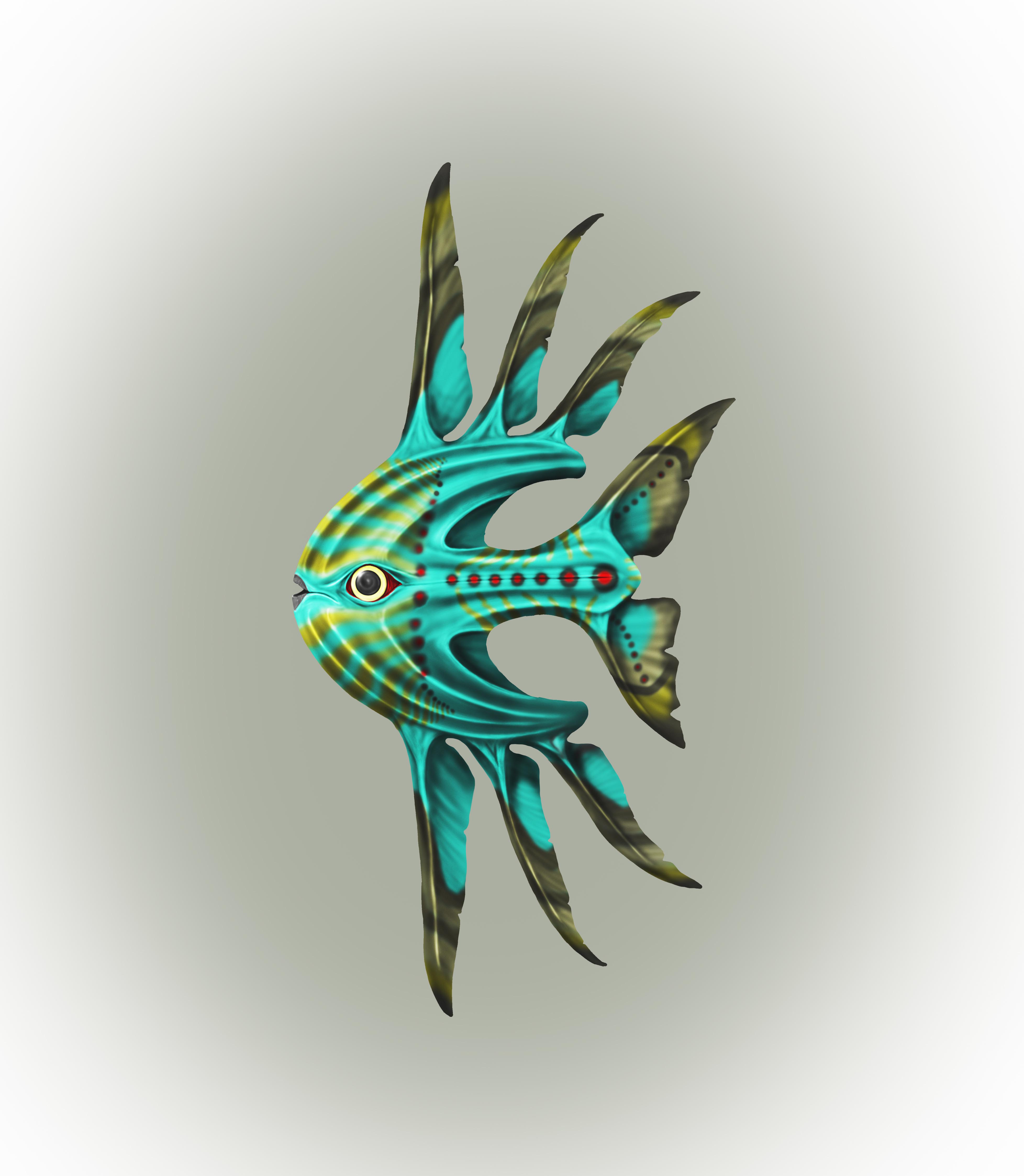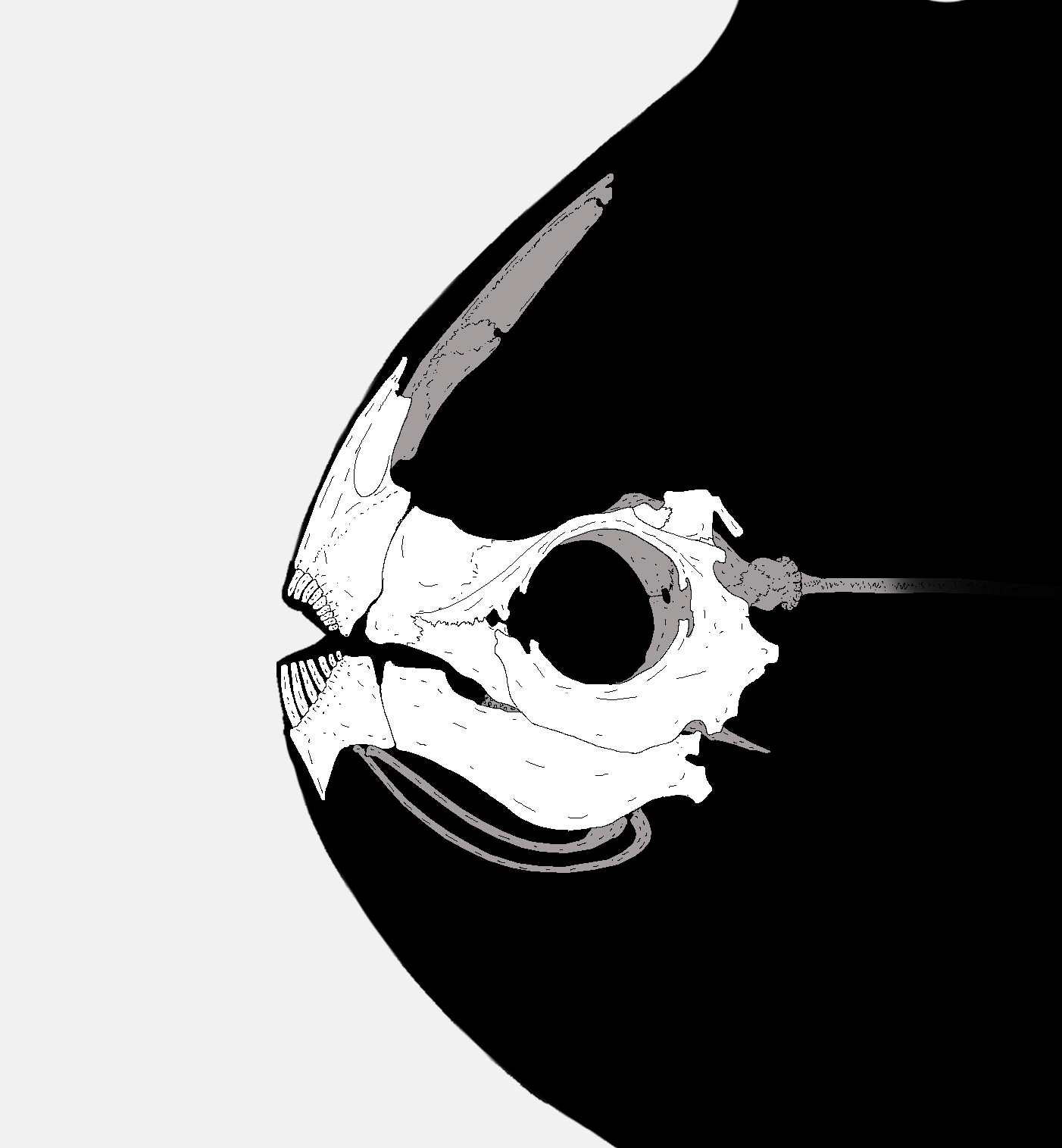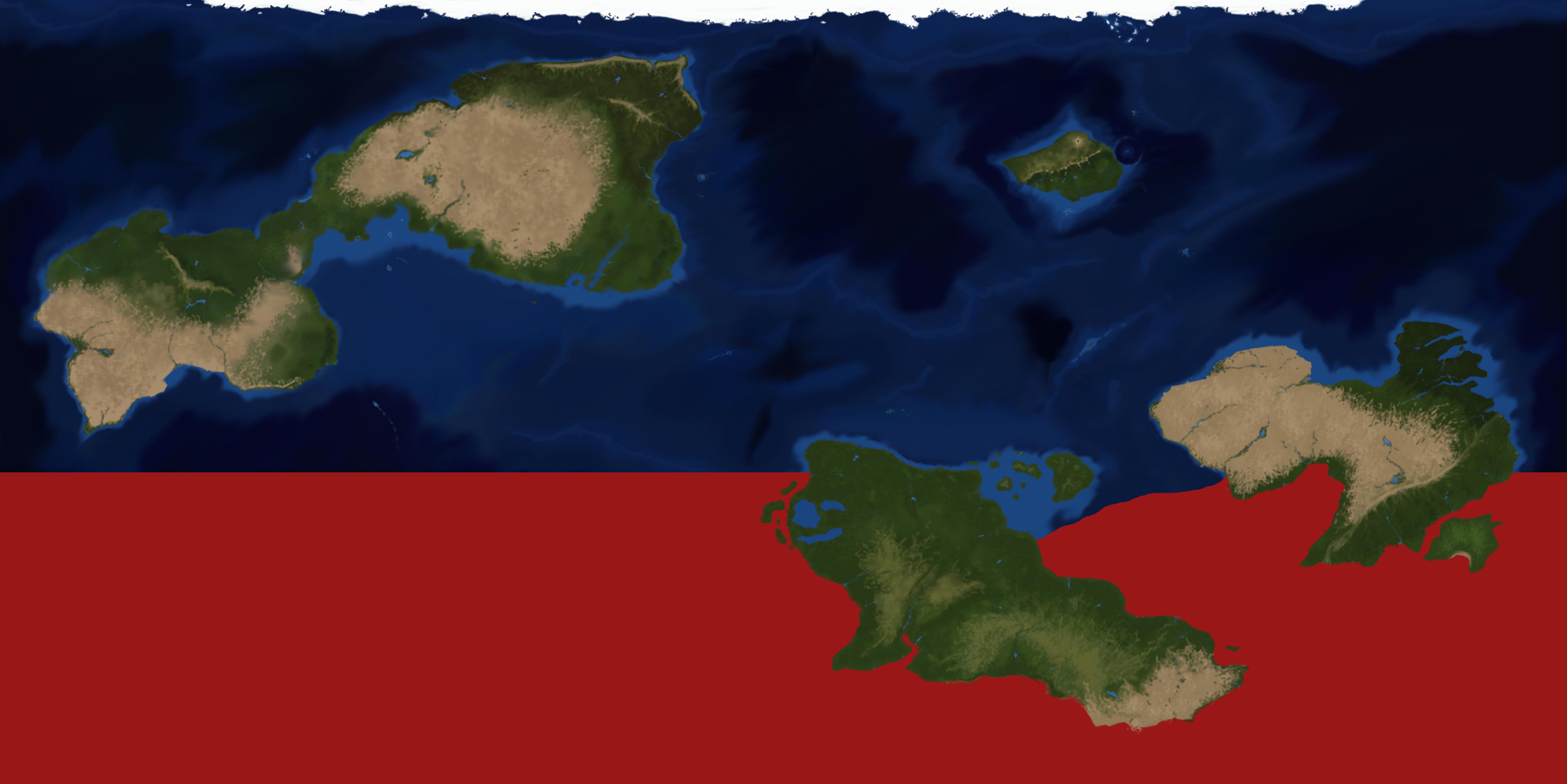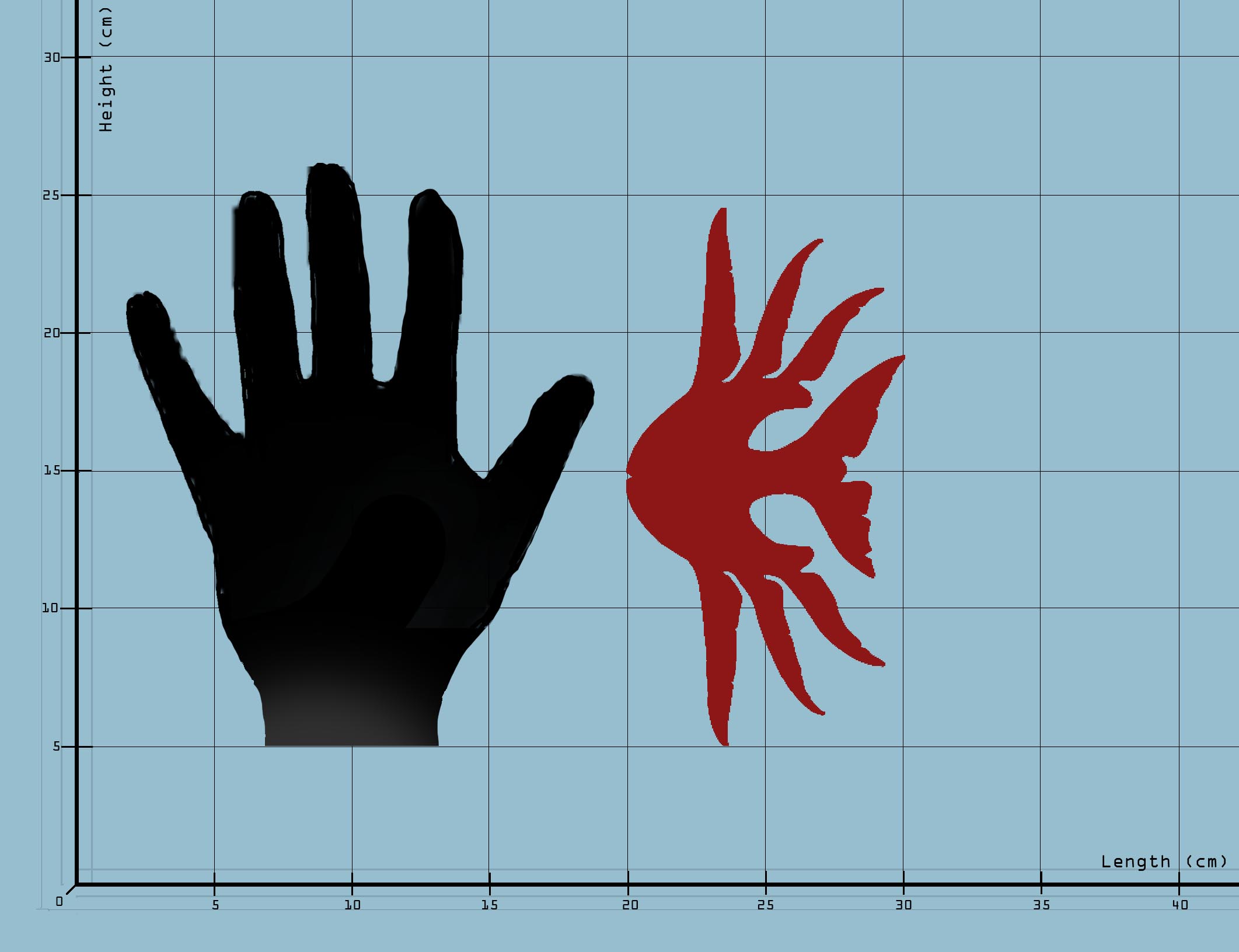Azure Frisbeefish
Anamothia comunis is a small sized amphibian that inhabits the pelagic environments of the Nuwadi ocean.
This animal feeds on floating plant life and, where the water is shallow enough, even jouvanile armored plants that grow on the seabed.
Found in schools of hundreds of specimens, these amphibians always travel together never to leave one another’s side so that they can protect eachother more easily.
This particuliar species is monogamous and once a couple is formed it never splits up, not even if one of the two perishes, having the remaining member to never reproduce again.
Its colours are used as sexual display and are brighter in males than in females.
Once a year, in correspondence with the flowering of the oceanic zoophytoplankton, these animals can congregate in schools thousand specimens strong to feed and exchange young for the next reproductive season.
A. comunis is commonly found in various acquariums worldwide and it has even been exported to Earth as it’s favoured by many on both planets.
Basic Information
Anatomy
- Cranial area minimized;
- teeth fused into a beak structure.
- Spinal cords II to IV caudally oblungated.
- Gill tail ventro-dorsally restricted from cordal section II to III; gill fan high with strong caudal drop;
- presence of Caudal fins; three Dorsal fins on the dorsal side of the body; pectoral, Anal I and Anal II all singular and ventrally disposed.
Genetics and Reproduction
Mandatory monogamy: A couple of these animals is forever.
Anamothia comunis males and females enter heat at the same time for the same period.
A couple is formed almost at birth from two youngs from two different shoals.
Mating happens between the selected couple and can take up to one hour to finish; During this time the male will copulate multiple times with the female, only stopping between the inseminations for ritual dances between the two, twirling in the water several times and spiraling one with the other to assert affection.
Once the fertilization has come to an end, the female will bear the eggs inside the egg ducts for ten days at the end of which she will lay them on the sides of the male (using a mucous substance to make them stick), who will keep them until they hatch.
The newly born spawns will lose the natal aculeus minutes after hatching; they will stay in a single group in the center of the shoal with the other spawns, protected by the adult individuals.
The couple's bond is unbreakable even in death, with the surviving member of the couple never reproducing again.
Growth Rate & Stages
A newly born Anamothia comunis is slightly transparent, making it more difficult to spot inside the great shoal of amphibians.
It will reach sexual maturity in four weeks, passing most of its time with the other spawns in the center of the shoal, where they are protected.
Once sexual maturity has been reached half of them will leave the shoal to exchange with half of the youngs from another one.
This is the time the youngs will select their mate.
At approximately one year of age the specimen will reach full adulthood and will join the rest of the shoal outside the spawn circle to start free feeding with the other members of the group.
Ontology is clearly visible: young members will be almost circular in shape with the intensification of the spinal curve being ever more clear as the animal grows.
Ecology and Habitats
They live in the Epipelagic zone of the Nuwadi ocean, from 1 to 50 m deep.
During the whole duration of the year they trace the same paths following the main currents leading them from one island to the other where they stop for a brief period of time to feed.
Dietary Needs and Habits
Being a strictly herbivorous species means they will consume whatever plant life they encounter.
During their long travels from one island to the other, they will often stop to graze on floating algae forests that are scattered in the open ocean.
Their main food source, however, are young armored plants found on the shallow sea bottom near the islands; they will use their sharp beaks to cut through the young plant's armored outside, reaching deep to the fleshy trunks inside.
Biological Cycle
Due to the abundance of food and their nomad lifestyle, they tend to be periannial with no intermission in activity.
Additional Information
Social Structure
In the wild they form shoals of hundreds of specimens layered from oldest to youngest.
On the outside of the shoal there can be found the oldest specimens and the single members; on the inner part of the shoal there are the barely matured individuals and the spawns.
Four weeks after the end of every mating season, all the local shoals of Anamothia comunis will converge together in a massive event two to three days long in which all the young specimens will exchange and find their life long mate.
The selection of a mate is a long process as every single young will dance and flirt with many other possible partners before finding the one they choose to mate with; even today scientists can't really tell how they choose a mate over the others.
Once a couple is formed they are inseparable and will partake in a series of daily activities such as passing eachother food or grooming the skin by gently scraping it with their beaks.
In captivity they will form groups of maximum twenty specimens before disbanding.
Domestication
While not proper domestication, this species has been artificially slected to create various morphs with a vast selection of colors; The most popular morphs at the time of writing are Bubble red and White body.
Uses, Products & Exploitation
While not palatable, this pecies is of great economic importance in the pet trade.
With the peculiar mating system these species is famous for, couples have to be sold together.
In the earlier days wild captured specimens were known to die off in captivity.
Nowadays these animals can be easily kept in home aquariums in couples and are even known to bond with the owner, getting to know them and trusting their hand.
Geographic Origin and Distribution
Perception and Sensory Capabilities
This animal bases its whole lifestyle around its exquisite sight.
Symbiotic and Parasitic organisms
They are targeted by many skin parasites which they will scrape off with their beaks while grooming.
Genetic Descendants
Scientific Name
Eoichthyia; Hijerakia; Parahijerakida; Cyclopiscopinninoidea ; Cyclopiscopinnidae; Anamothia; A. comunis
Lifespan
7 years
Conservation Status
LEAST CONCERN: No current measures have been taken on the protection of the species
Population trend: STABLE
Average Weight
10 to 30 gr
Body Tint, Colouring and Marking
Azure with yellow stripings above and below the cranium ending in black spots with a red center.
Such pattern is also found extending vertically through the caudal section of the body.
The fins are banded for the last half of their length with colors ranging from a dark brown to a brownish yeallow with brown tips.
Remove these ads. Join the Worldbuilders Guild













Comments